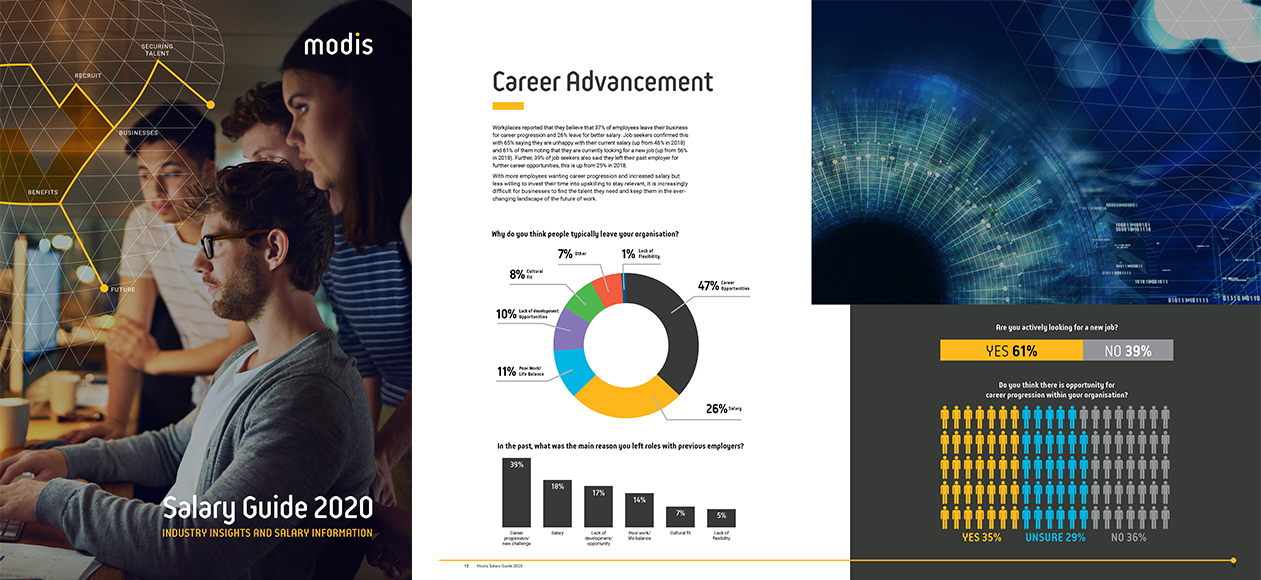Content management error: Header Banners should not be placed in the Navigation placeholder!
Technology in the workplace
Posted 12 February 2020Content management error: Generic Content Banners should not be placed in the Navigation placeholder!
As technology continues to develop at a rapid rate, the future of work and what that means for many businesses and their staff remains to be top of mind for many.
Imagine talking to someone 20 years ago, could they have predicted the way we work today? Likely not. And how about 20 years from now? The future is in a state of flux and disruption is completely transforming the world of work.
No single industry, government or entity has a clear solution, change is inevitable. We hear much talk about robots and co-bots, outsourcing and in-sourcing, re-skilling and up-skilling, pink-collar workers and the care economy.
Content management error: Generic Content Banners should not be placed in the Navigation placeholder!
We're only human
Humans are no longer the sole possessors of skills such as vision, analysis, decision-making, language and learning. Recognition of this has, in recent years, led to increased fears about the impact of AI on the economy and work, and questions of whether technology will destroy jobs or create new ones, and in what proportion.
It raises questions about ethics and morality in developing artificially intelligent technologies. In addition, it calls into question jobs and professions that will cease to exist and how that will change lives and livelihoods.
Content management error: Generic Content Banners should not be placed in the Navigation placeholder!
Rapid evolution
The rapid evolution of technologies that are impacting every industry and sector means that future occupations will require different digital skills, ranging from basic data literacy in jobs that today may be purely manual, to advanced computer science in others. This will be widespread, not focused on a collar colour. Most jobs will be affected by technological change, giving rise to an urgent need for up-skilling and re-skilling at a higher rate than the current education and training systems can deliver.
In a recent workplace survey, we uncovered that only 47% of employees indicated they are currently upskilling to stay relevant. This is a decline from the 66% that were upskilling in 2018. Moreover, with a scarcity of talent, organisational leaders must invest significantly more in the training and skilling of their current workforce to prepare them for this change, rather than assuming that there will be a constant stream of new recruits. 31% of workplaces indicated that they are upskilling less than 5% of their workforce with 20% of workplaces indicating that they are not upskilling anyone.
Both workplaces and job seekers need to start their future proofing plans, investing in continual learning and development to ensure a robust future.
Workplaces also reported that they believe 37% of employees leave their business for career progression and 26% leave for a better salary. Job seekers confirmed this with 65% saying they are unhappy with their current salary and 61% of them noting that they are currently looking for a new job. Further, 39% of job seekers also said they left their past employer for further career opportunities – this is up from 25% in 2018.
With more employees wanting career progression and increased salary but less willing to invest their time into upskilling to stay relevant, it is increasingly difficult for businesses to find the talent they need and keep them in the ever-changing landscape of the future of work.
Content management error: Generic Content Banners should not be placed in the Navigation placeholder!
Modis Salary Guide
Through a mixture of expert local knowledge and a unique understanding of our wide network of candidates, we’ve put together a snapshot of the labour market, to help businesses secure the right people.
To learn more about what workplaces around Australia are doing to attract and retain talent, download our 2020 salary guide here.
